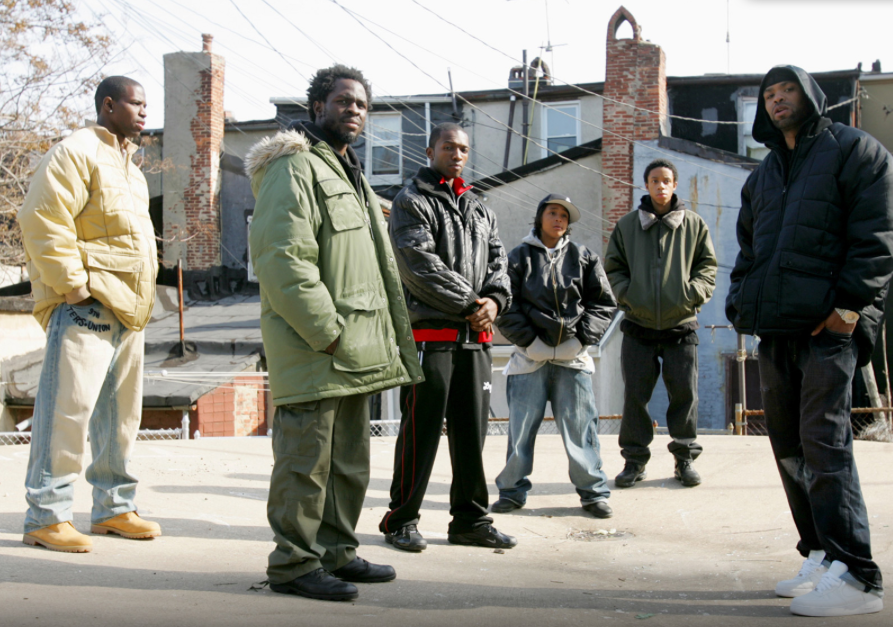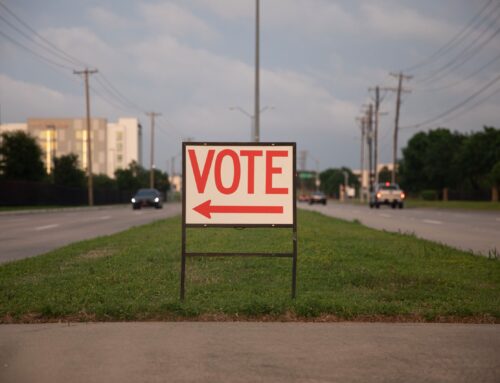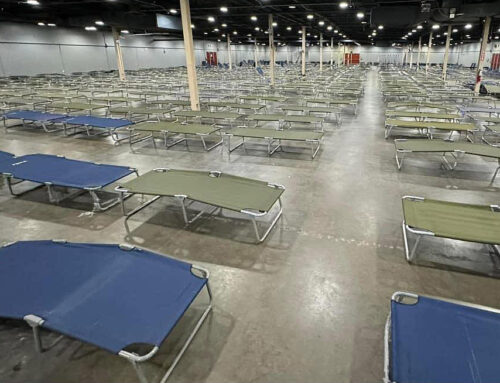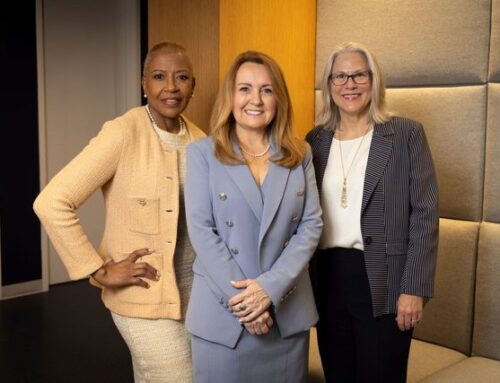OK, no, it was not.
But there are some striking similarities between early 2000s Forest-Audelia area apartment communities and the Baltimore projects, which provide the setting for the acclaimed HBO crime drama, ‘The Wire“.
Today, the apartments of Lake Highlands aren’t exactly bastions of wholesome or crime-free living. But conditions have improved somewhat, at least according to Dallas Police statistics which show the area dropping to No. five on the city’s violent crime hotspots list (it topped out at No. two a few years ago).

This man was arrested for allegedly stealing all of the furniture from a neighbor’s apartment while she was out of town: Photo by Can Turkyilmaz
I know from years of reporting on the area that steady improvements indeed have been made, however, today I am here to write about the really bad old days.
While researching a November story, I came across this 2004 piece from the Brownsville Herald about Dallas’ 248 murders that year, which prompted the reporter to designate ours one of “the nation’s deadliest cities” in 2004.
The article blames Dallas’ drug trade, in large part. Apartment complexes, the reporter notes, were “killing fields.”
The entire piece is a fascinating read, but here’s where it becomes specifically interesting to us Lake Highlands dwellers: “Last fall [2003], elements of Dallas’ murder machine made the move from Pleasant Grove, up Buckner Boulevard and into the Lake Highlands area,” the article reads, “[where] six men were shot and killed and another six were wounded.”
A few years ago when I went on a police ride along, Sr. Cpl. Tracy Glenn told me Bent Creek were our neighborhood’s absolute worst apartments, but it had improved ever so slightly by then thanks to lasting effects of a concentrated police effort a few years before.
We entered the gates and (just a mile from some of Lake Highlands’ nicest $450k-plus homes, mind you) another world — a very dense community suffering the obvious effects of poverty and all the bad things that come with it.
Here is what was happening there in the early 00s (and probably now, too, at least at some level):
Drive into Bent Creek on Forest Lane near Audelia Road. Pass through the mechanical gate. Turn right and follow the patchwork wooden fence, where gaps that allowed people to cut through between complexes are repeatedly covered up with boards. Go to the back of the complex … where a pushers’ paradise thrived. The back parking lot dead-ends into woods,allowing dealers a view of who’s coming and going … Just minutes from Interstate 635, Bent Creek was convenient for customers not only in Dallas but also in Garland and Richardson … The dealers’ clientele included customers from all walks of life. The dealers’ “good-eyes” perched in the front, watching the main gate, sometimes alerting others over walkie-talkies. “Runners” transported money and drugs through the breezeways between clients and dealers. But these dealers were just middlemen in a larger Dallas drug trade. With stash houses in Pleasant Grove and Oak Cliff, they were just providing supply for demand.
Very, very Wire-esque, no?
It was within these and similar nearby environs that several young black men were violently killed or wounded by gun.
The article describes how the glut of tony apartments built for young singles of the 80s and 90s transformed to dens of drugs, violence and gang activity as years and zoning changes took their toll.
“Several of the murders bore witness to an odd juxtaposition. At Providence Apartment Homes, an apartment that overlooked formerly well-maintained tennis courts became a murder scene. At Bent Creek Apartments, a shooting broke out in a parking lot divided by carports and lined with sculpted shrubbery.”
In just 33 days, the Autumn Ridge Apartments saw three murders —
“Corey Wooten, 24, known to his friends as “Kinfolk,” was in an Autumn Ridge courtyard after 8 p.m. Oct. 6 when someone came up behind him and shot him several times. He stumbled face-first into a concrete staircase leading to a 2nd-floor apartment. A pair of headphones rested on his ears. A neighbor heard it was over $5 or “something to do with a girl.” But police say Mr. Wooten’s connection to drug dealers in Pleasant Grove made him target enough for rival dealers who claim northeast Dallas as their territory. Four days later, Corey “Hook” Clark, 16, and Howard “Pee Wee” Simon, 19, were gunned down across the parking lot from where Mr. Wooten fell. Mr. Clark died, but Mr. Simon survived. Corey Wooten’s friends appeared to have made good on their threat. Police believe the two slayings were retaliation.
The article goes on the describe several more incidents of “murderous violence,” including the near-death of rapper Mr. Pookie, a Berkner alum whose popular tunes include “Crook for Life” and “Smoke One.”
The piece also delves into more murders in Lake Highlands that were not tied to drugs but to egos and antisocial behavior. Like the guy nicknamed “Pooh Bear” who became engaged in a shoot-out at a birthday party and lost his life. We still regularly see these so-called “Argument-Conflict” murders in the police reports.
Help arrived in December of that year, according to the article, in the form of Dallas Police Department’s Operation Kitchen Sink (the Advocate also ran an article about OKS).
Here is how northeast division commander David Brown (now he’s police chief) at the time described the name of the project: “Because I’ve been at this station for four years, and I was thinking that we had done everything but throw the kitchen sink at the problem,” Brown says. “And now we’re doing that, too.”
By the end of the monthlong sweep, police had netted 1,188 citations and 197 arrests, 50 for felonies. A tip from a Providence resident helped
solve one of the shootings.
Incidentally, resident crime activists last year presented Brown, now the head honcho of the Dallas Police Department, with the “Kitchen Sink” award.
Explained Dr. Michael Lindsey, a Dallas psychologist and lawyer who has studied the over-representation of ethnic minorities in the Dallas County juvenile justice system.
“Pent-up frustration with economics and unequal educational and housing situations all add up to the disproportionate amount of black-on-black crime.”
OKS — with its month-long 24/7 surveillance of troubled apartment communities — brought about a significant decrease in crime. But it was not sustainable.
But did the effort at least provide some lasting effects? One could argue that it did.
Experts at the time suggested that apartment owners needed to take more accountability for their tenants. Background checks, zero tolerance on drug dealing, evictions for criminal behaviors.
We’ve seen examples at several LH apartment communities of this happening. Innovative landlords have made efforts to weed out those with bad rental track records. And councilman Jerry Allen and Dallas Police representatives meet regularly with apartment owners to continue to try to find solutions.
With thousands upon thousands of renters in the area, it is not easy, but as discussed in this editorial, we are making progress.

Kids-U is an after-school program for children without post-school supervision or homework help: Photo by Brandy Barham
Experts back in the OKS days also stressed the need to focus on children from poor and broken homes whose only examples are of adults engaging in criminal behavior; they need mentors and an opportunity to take a different path.
Lake Highlanders have made great strides in this area as well — see Forerunner Mentoring, Kids-U, Hamilton Park youth football and The New Room community center for just a few examples.







